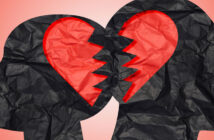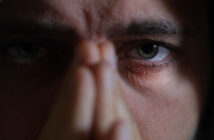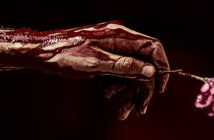Something I’ve been thinking about for over a year now is if the gay community has higher rates of narcissism than the heterosexual community.
I originally broached this topic in a two-part writeup I published in August 2021 analyzing The Velvet Rage by Alan Downs (Part 01, Part 02).
As I pointed out then, Downs lays out several indicators of narcissistic behavior in gay men. These self-absorbed, antagonistic, and shallow behaviors showing up in a large number of gay men stem from “toxic shame” instilled at an early age. It’s this shame that creates the deep, dark pit of insecurity in many gay men. And then these same gay men develop some level of narcissism in adulthood.
To be fair, Downs almost never uses the word “narcissism” when discussing these issues. “Narcissism” only appears twice in the book—once in the epilogue on page 222, and once in the index on page 252. “Narcissistic” appeared once on page 203. He probably avoided using these descriptors because he didn’t want to further stigmatize an already stigmatized group of people—even if that’s what the behavior largely is.
Narcissistic.
This is all speculation on my part. I don’t have direct insight into what his intentions were. But it makes sense that he didn’t want the messages of his book to be consumed by pathologizing the gay community by peppering in the powerful “narcissism” word.
But I’m not shy about pointing out the association; this idea has really hooked me.
During my general research for this blog I came across a 2021 article from Personality and Individual Differences titled, “The dark side of the rainbow: Homosexuals and bisexuals hare higher Dark Triad traits than heterosexuals,” authored by Peter K. Jonason of the University of Padua in Italy and Severi Luoto of the University of Auckland in New Zealand.
I paid my $35.95 for PDF access and gave the article a read (three reads, actually)
I’ll note here that this is the first scientific article I’ve read, and my three readings were an attempt to absorb the information so I could synthesize some key takeaways below. Further, it’s not my intention, whatsoever, to misreport or misrepresent the findings of the article.
I will be revisiting the article more in the future, and it’s likely I’ll be updating this post as I do.
First, What Is The “Dark Triad”?
The “Dark Triad” is a term used to describe three dysfunctional patterns of behavior that, while distinct unto themselves, have overwhelming similarities that overlap and interact when present in the overall personality structure of an individual.
The first piece of the Dark Triad is Machiavellianism, which is the fancy term for highly conniving, scheming, and deceptive behavior. Someone who displays Machiavellian behavior isn’t shy about using manipulation and cunning to achieve his own ends.
The second piece of the Dark Triad is psychopathy, and this is the one that both fascinates and spooks people the most. This is the personality style where a person’s concern for social, cultural, and legal norms are nonexistent. A psychopath lacks any kind of remorse and has a callous and chilling demeanor. There’s no emotion or empathy. Life is a predatory exercise for psychopaths. They are the monsters among us.
The third piece of the Dark Triad is narcissism, and this is probably the element most familiar to readers. The lack of empathy, the consuming need for validation and admiration, the selfishness and arrogance, the grandiosity, the deep entitlement—it’s all of this stuff (and more) that describes a narcissist.
So, What Does The Article Generally Say?
First, the study that the article is reporting on looked at heterosexual men and women, homosexual men and women, and bisexual men and women.
Based on the results of this one study, the research suggests that elements of the Dark Triad (Machiavellianism, psychopathy, and narcissism) appeared, overall, at higher rates in homosexual and bisexual subjects (men and women combined) as apposed to heterosexual subjects (again, men and women combined). Some of the results were marginal, whereas other results were approaching “statistical significance.”
Homosexual male subjects slightly edged out all other subjects in Machiavellianism, whereas bisexual women edged out all other subjects in psychopathy and narcissism.
Who Did The Study Examine?
An international research team in 2014 collected self-reported data from 42 countries.
The data was collected from 4,063 participants; 2,556 were female and 1,507 were male.
Concerning location, 2,606 participants came from “W.E.I.R.D.” (Western, educated, industrialized, rich, and democratic) countries, and 1,457 participants came from non-W.E.I.R.D. countries.
The measurement tool was an inventory of questions called the “Dark Triad Dirty Dozen.”
Let’s Explore The Gender Shift Hypothesis And “Hypermasculinity”
The “gender shift hypothesis” postulates that homosexual men take on feminine qualities due to their sexual orientation and subsequent socialization, and homosexual women take on masculine qualities due to their sexual orientation and subsequent socialization.
As noted in the study, bisexual men and women “tend to show gender nonconformity and cross-sex neuroanatomical changes which place them between heterosexual and homosexual participants.” Translation: bi men and women “gender shift” somewhat, but not as much as their gay counterparts.
But the gender shift hypothesis is shaken up a bit since gay men score higher on displaying Dark Triad behaviors (Machiavellianism in particular). This does not cleanly align with the gender shift hypothesis, because following the logic of the hypothesis, gay and bi men should exhibit feminine personality attributes.
Therefore, they should score lower on Dark Triad traits, since these traits are typically believed to appear in heterosexual men the most.
But within this study, gay and bi men score higher than heterosexual men.
According to Jonason and Luoto:
To our knowledge, this is the first such finding (besides bisexual men’s higher sociosexuality and sex drive: Reference 01) reporting a hypermasculine psychological profile in homosexual and bisexual men: most other findings indicate that homosexual men are feminized on most traits while being sex-typical on others.
The authors of the article directly state that this information is new and a larger sampling size is needed for further investigation.
What Is Hypermasculinity, Anyway?
I never heard of the term “hypermasculinity,” so I paid a visit to the wisest oracle of our time.
According to Wikipedia:
Hypermasculinity is a psychological term for the exaggeration of male stereotypical behavior, such as an emphasis on physical strength, aggression, and sexuality.
This term has been used ever since the research [was first]conducted by Donald L. Mosher and Mark Sirkin in 1984. Mosher and Sirkin operationally define hypermasculinity or the “macho personality” as consisting of three variables:
— Callous sexual attitudes toward women
— The belief that violence is manly
— The experience of danger as exciting
They developed the Hypermasculinity Inventory (HMI) designed to measure the three components.
Research has found that hypermasculinity is associated with sexual and physical aggression towards women and perceived gay men.
Prisoners have higher hypermasculinity scores than control groups.
As I read this, it was so glaringly obvious it was blinding. Hypermasculinity perfectly describes many, many gay men the world over.
There is a heterosexual perception of the gay community that’s simultaneously neutered and fanciful, and not to mention antiquated and tired. This perception falls into the gender shift hypothesis.
But I challenge anyone who disagrees that the gay community doesn’t have a hypermasculinity problem to scroll through Grindr or Scruff in any major city.
Trust me, you’ll be bombarded with “an emphasis on physical strength, aggression, and sexuality” in a majority of profiles.
Is Hypermasculinity A Psychological Adaptation To Social Stigma?
Jonason and Luoto speculate that hypermasculinity in gay and bi men could very well be an adaptation to social and cultural stigma.
They write:
It is possible that because bisexual and homosexual men are subject to greater amounts of discrimination and harsher treatment than heterosexual men are (Reference 02, Reference 03, Reference 04), this may prompt an adaptive response to be duplicitous, deceptive, and disguise themselves (i.e., Machiavellianism).
Jonason and Luoto further state that if their hypothesis is accurate, then higher levels of Machiavellian behavior in non-heterosexual men would “not be a pathology, but instead, a pseudo pathology that can help men with atypical sexual originations navigate dangerous and hostile social contexts they sometimes face.”
“Psychobehavioral Masculinization”
According to the findings of the study, bisexual woman scored higher on all three Dark Triad traits compared to homosexual women and heterosexual women.
As Jonason and Luoto write:
A potential explanation for this is that the life history strategies of non-heterosexual women are faster than heterosexual women’s, for which there exists abundant evidence (Reference 05).
One manifestation of this psychobehavioral masculinization in non-heterosexual women is their increased interest in casual sex (i.e., a fast mating strategy) and heightened aggression (Reference 05), both of which have been repeatedly linked to psychopathy and narcissism.
This aligns with our (somewhat mixed) finding of higher Dark Triad scores in bisexual women, as Machiavellianism and psychopathy are associated with faster life history strategies (Reference 06)…
Again, I think it’s important to emphasize that the authors of the article directly state (several times) that this information is new and a larger sampling size is needed for further investigation.
But these initial findings are both fascinating and important, none the less.
With all that said, are you dealing with your own toxic relationship? Are you stuck in a situation you’re unsure of?
Don’t hesitate to reach out.
I’d love to hear your story and offer some advice if I can. Share in the comments or send me an email anytime.
References
Reference 01: Lippa, R. A. (2020). Interest, personality, and sexual traits that distinguish heterosexual, bisexual, and homosexual individuals: Are there two dimensions that underlie variations in sexual orientation? Archives of Sexual Behavior, 49, 607–622.
Reference 02: Bailey, J. M., Vasey, P. L., Diamond, L. M., Breedlove, S. M., Vilain, E., & Epprecht, M. (2016). Sexual orientation, controversy, and science. Psychological Science in the Public Interest, 17, 45–101.
Reference 03: Cuerda-Galindo, E., L´opez-Mu˜noz, F., Krischel, M., & Ley, A. (2017). Study of deaths by suicide of homosexual prisoners in Nazi Sachsenhausen concentration camp. PLoS One, 12.
Reference 04: Symons, C. M., O’Sullivan, G. A., & Polman, R. (2017). The impacts of discriminatory experiences on lesbian, gay, and bisexual people in sport. Annals of Leisure Research, 20, 467–489.
Reference 05: Luoto, S., Krams, I., & Rantala, M. J. (2019a). A life history approach to the female sexual orientation spectrum: Evolution, development, causal mechanisms, and health. Archives of Sexual Behavior, 48, 1273–1308.
Reference 06: Jonason, P. K., Foster, J. D., Egorova, M. S., Parshikova, O., Csath´o, ´A., Oshio, A., & Gouveia, V. V. (2017). The Dark Triad traits from a life history perspective in six countries. Frontiers in Psychology, 8, 1476.
* * *
Confused by some of the terminology I use to describe people and places?
Check out the Gay Narcissistic Relationship Glossary for more information.
* * *
If you’re interested in learning more about narcissism, toxic relationships, dark personalities, and sexuality, then I highly recommend the books below.
Please consider buying through the provided Amazon Associate links. While the content on my website is yours to read for free, I do appreciate any support offered toward my work.
The reading list includes:
Should I Stay Or Should I Go: Surviving A Relationship With A Narcissist (Dr. Ramani Durvasula)
The Human Magnet Syndrome: The Codependent Narcissist Trap (Dr. Ross Rosenberg)
The Sociopath Next Door (Dr. Martha Stout)
Without Conscience: The Disturbing World Of The Psychopaths Among Us (Dr. Robert D. Hare)
In Sheep’s Clothing: Understanding And Dealing With Manipulative People (Dr. George Simon)
Rethinking Narcissism: The Bad—And Surprising Good—About Feeling Special (Dr. Craig Malkin)
Being Homosexual: Gay Men And Their Development ( Dr. Richard Isay)
The Velvet Rage: Overcoming The Pain Of Growing Up Gay In A Straight Man’s World (Dr. Alan Downs)



